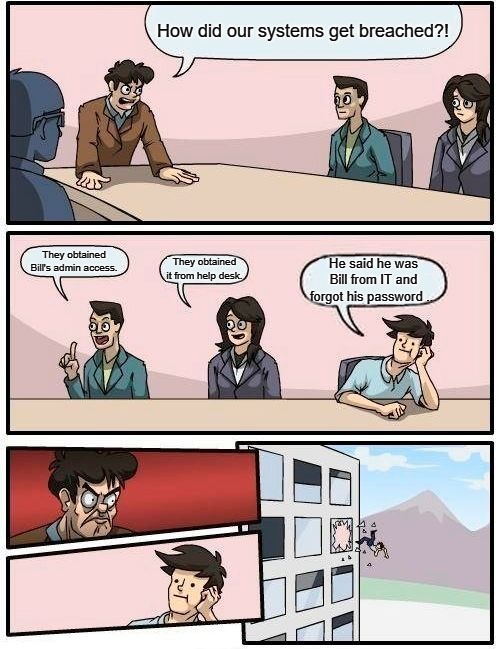
With the recent ransomware attack of MGM and Caesars, you may be wondering; “what is social engineering and how do you protect against it?” Social engineering is one of the most prevalent and insidious forms of cyberattacks. Social engineering involves manipulating people into revealing confidential information or performing actions that compromise their security. In this blog post, we’ll explore what social engineering is, common tactics used by attackers, and most importantly, how you can combat social engineering.
Understanding Social Engineering
Social engineering attacks prey on human psychology rather than exploiting technical vulnerabilities. Attackers leverage trust, fear, curiosity, and other emotions to manipulate their victims. Here are some common social engineering tactics:
Phishing: Attackers send deceptive emails or messages that appear to come from trustworthy sources, often with a sense of urgency or fear, to trick recipients into clicking on malicious links or disclosing sensitive information.
Pretexting: Attackers create a fabricated scenario to manipulate individuals into providing personal information or access to secure areas. This can include impersonating authority figures, such as IT support or company executives. This tactic was the one used against MGM and Caesars.
Baiting: Malicious software or files are disguised as something enticing, such as free software, movies, or music, to lure victims into downloading and executing them.
Tailgating: In physical social engineering, an attacker gains unauthorized access to a restricted area by following an authorized person through a secured door.
Combatting Social Engineering
Protecting yourself from social engineering attacks requires a combination of awareness, skepticism, and proactive measures. Here are 10 ways how you can combat social engineering effectively.
1. Trust But Verify
Always adopt a “trust but verify” approach. Even if someone appears to be a trusted colleague or service provider, don’t immediately comply with their requests for sensitive information or actions. Verify their identity through a separate, trusted channel before proceeding. A known number already on file can be a good way.
2. Awareness Training
Regularly conduct security awareness training for yourself and your team. Training your employees is the best way to combat social engineering. Simulate social engineering attacks to educate individuals about the tactics used by attackers. The more people recognize these tactics, the less likely they are to fall victim to them.
3. Implement Strict Access Controls
Limit access to sensitive data and systems based on the principle of least privilege. Ensure that employees only have access to the information necessary for their roles. This minimizes the potential damage from insider threats and makes it more challenging for attackers to gather critical information.
4. Use Email Filters and Authentication
Employ email filters and authentication mechanisms like SPF, DKIM, and DMARC to reduce the likelihood of phishing emails reaching your inbox. These technologies help verify the authenticity of the sender’s domain.
5. Secure Password Management
Encourage the use of password managers to generate and store strong, unique passwords for each online account. This minimizes the risk of password-based attacks and credential theft.
6. Multi-Factor Authentication (MFA)
Of course this is here. There is a reason why you see MFA in any cybersecurity guide out there. It is that good. Implement MFA wherever possible. This additional layer of security can prevent unauthorized access even if an attacker manages to obtain login credentials.
7. Physical Security
In addition to digital safeguards, maintain strict physical security measures. Limit access to physical spaces, use access badges, and educate employees about the importance of not holding doors open for strangers (tailgating).
8. Continuous Monitoring
Implement continuous monitoring of network traffic and system logs. This can help detect unusual patterns of behavior that may indicate a social engineering attack in progress.
9. Incident Response Plan
Develop a comprehensive incident response plan that outlines the steps to take in case of a social engineering incident. This is vital to the continuity of your business. This can drastically mitigate the damage that comes from a social engineering incident. This plan should include procedures for reporting incidents, containing the breach, and notifying affected parties.
10. Whitelisting
Use whitelisting to specify which applications are allowed to run on your systems. This can help prevent the execution of malicious files.
Social engineering is a persistent threat, but with a combination of robust security practices, ongoing education, and a vigilant mindset, you can significantly reduce your vulnerability to these tactics.

